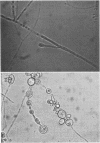Abstract
Evidence that disease due to the thermally dimorphic fungus Paracoccidioides brasiliensis occurs post-puberty predominantly in males led us to hypothesize that hormonal factors critically affect its pathogenesis. We show here that estrogens inhibit mycelial- to yeast-form transformation of P. brasiliensis in vitro. Transformation of three isolates was inhibited to 71, 33, and 19% of the control values in the presence of 10(-10), 10(-8), and 10(-6) M 17 beta-estradiol, respectively. The synthetic estrogen diethylstilbestrol was active but less potent than estradiol, whereas testosterone, 17 alpha-estradiol, tamoxifen, and corticosterone were inactive. This function was specifically inhibited, since yeast-to-mycelium transformation, yeast growth, and yeast reproduction by budding were unaffected by 17 beta-estradiol. Of note is the fact that mycelium-to-yeast transformation occurs as the first step in vivo in the establishment of infection. The cytosol of the three isolates studied possesses a steroid-binding protein which has high affinity for 17 beta-estradiol. We believe that this binding protein represents a P. brasiliensis hormone receptor which can also recognize mammalian estrogens. We hypothesize that the ability of estrogen to decrease or delay mycelium-to-yeast transformation at the initial site of infection contributes to or is responsible for the marked resistance of females, and that the binder described is the molecular site of action.
Full text
PDF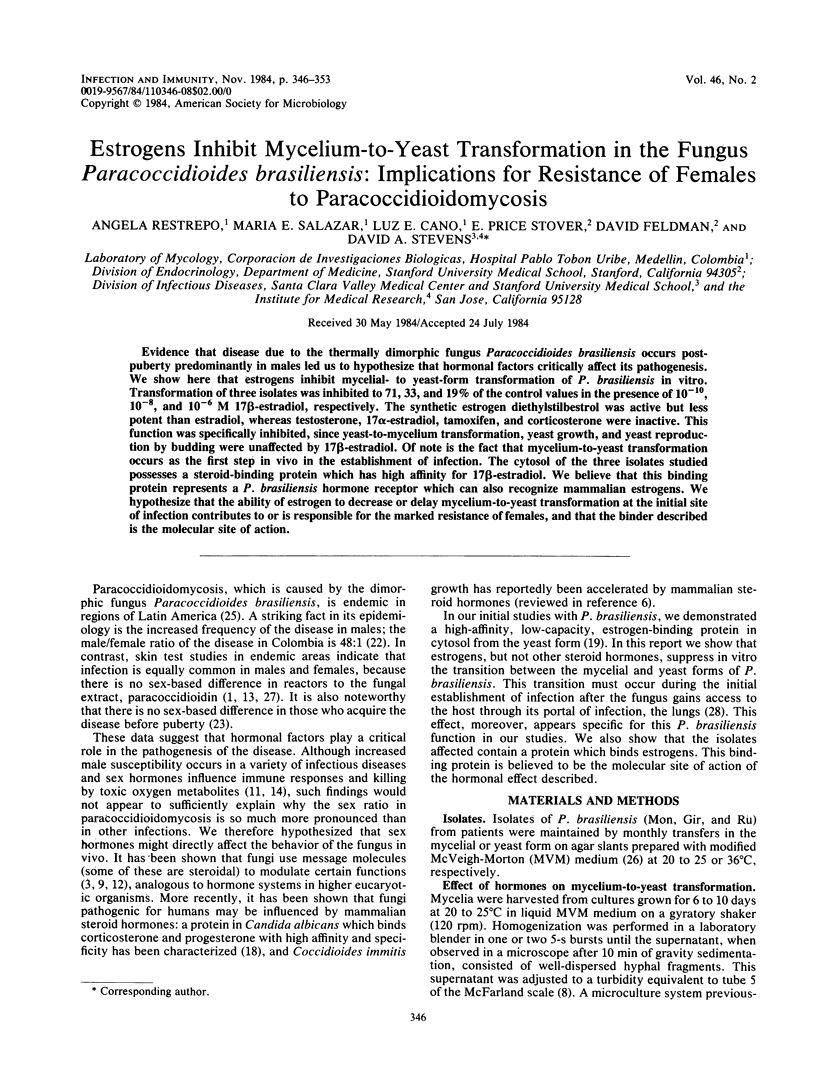
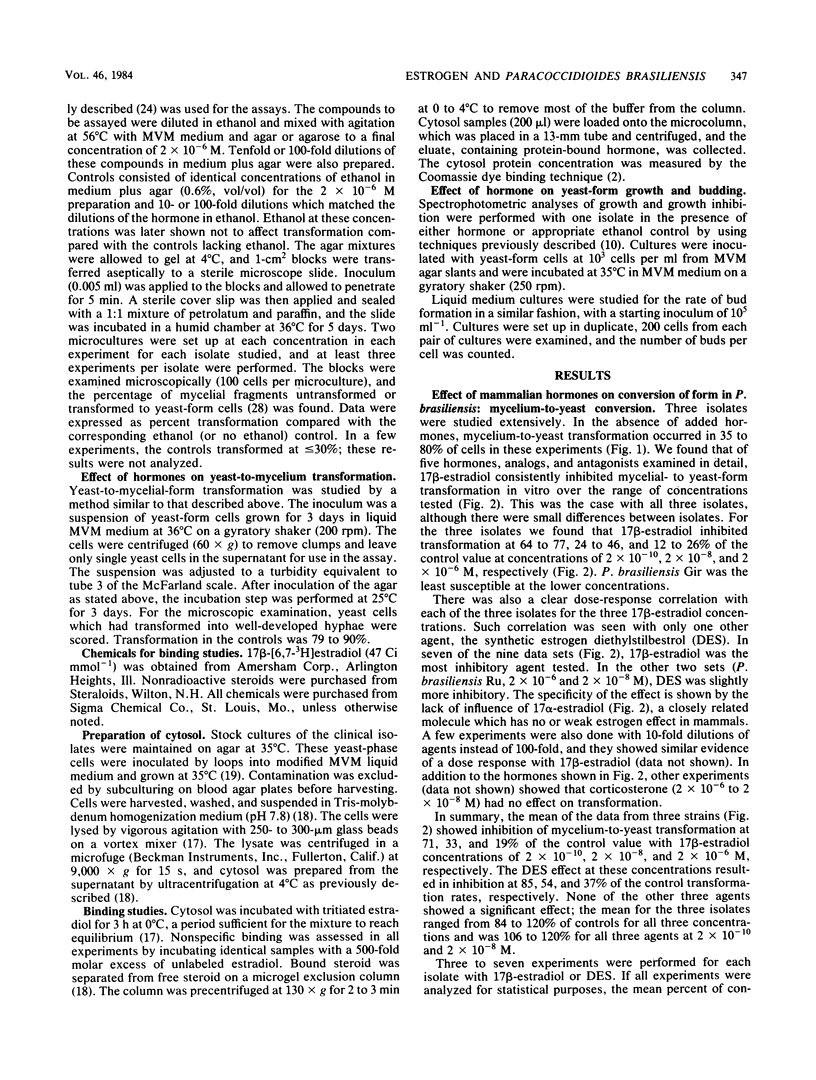
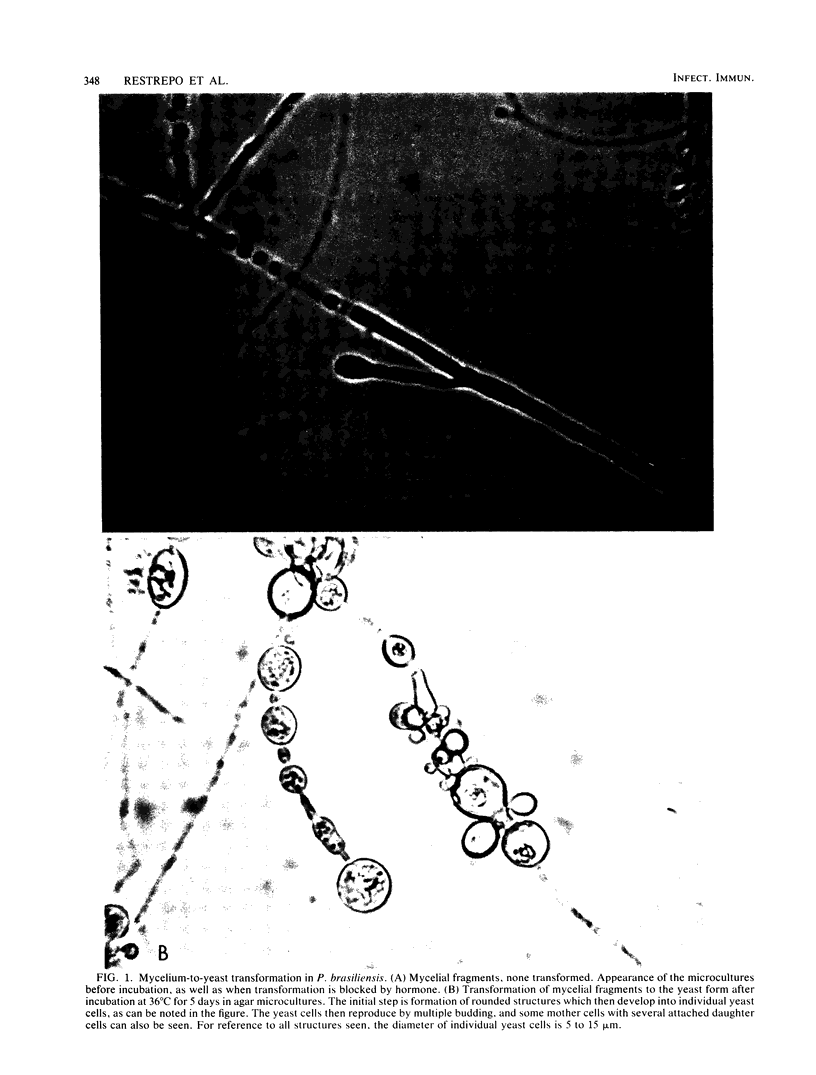
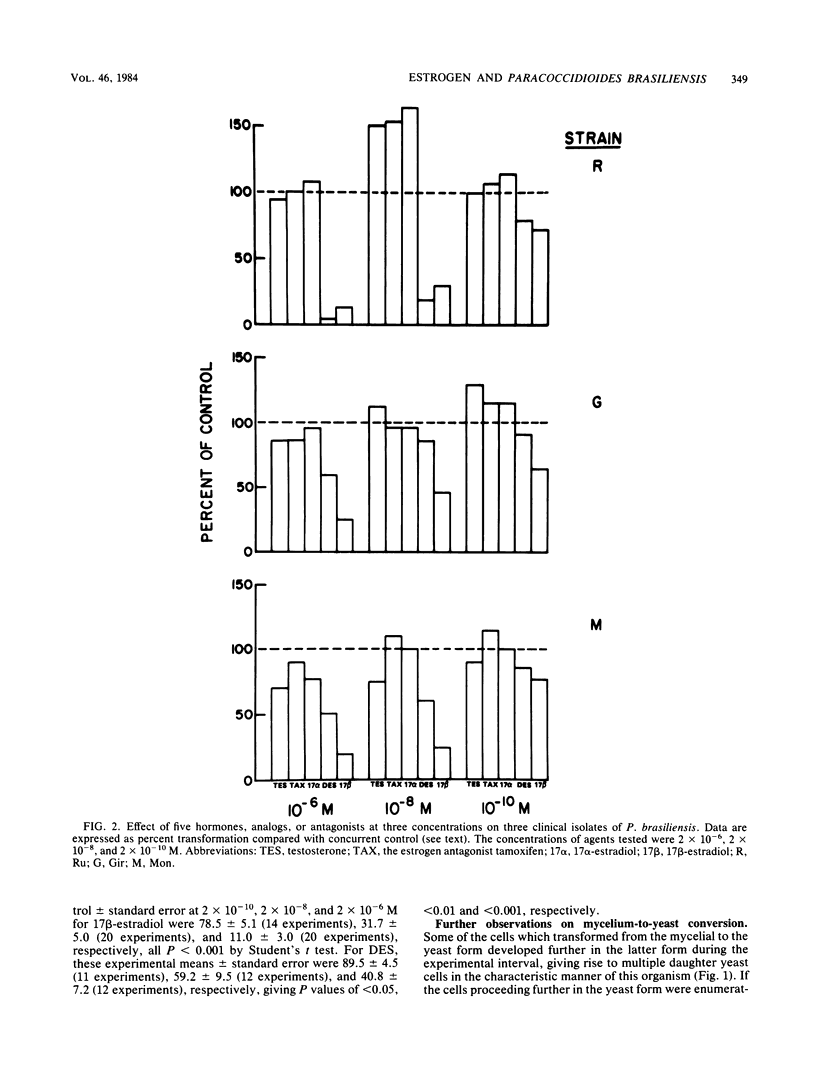
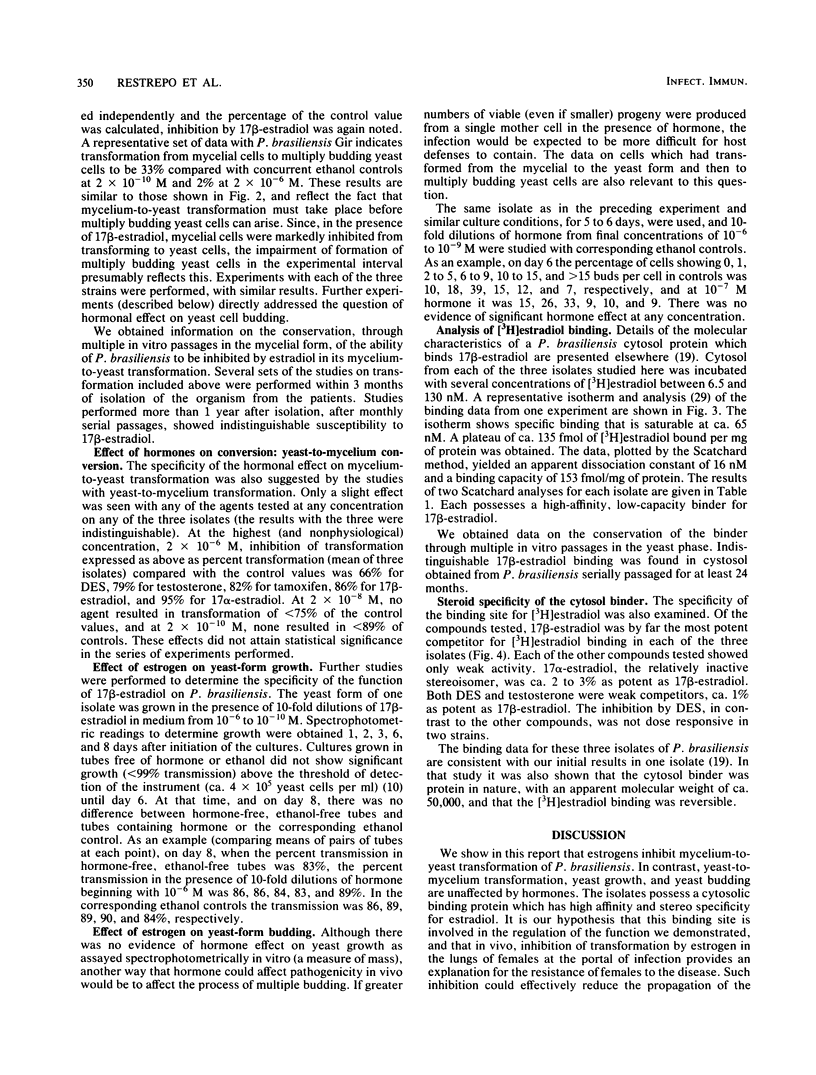
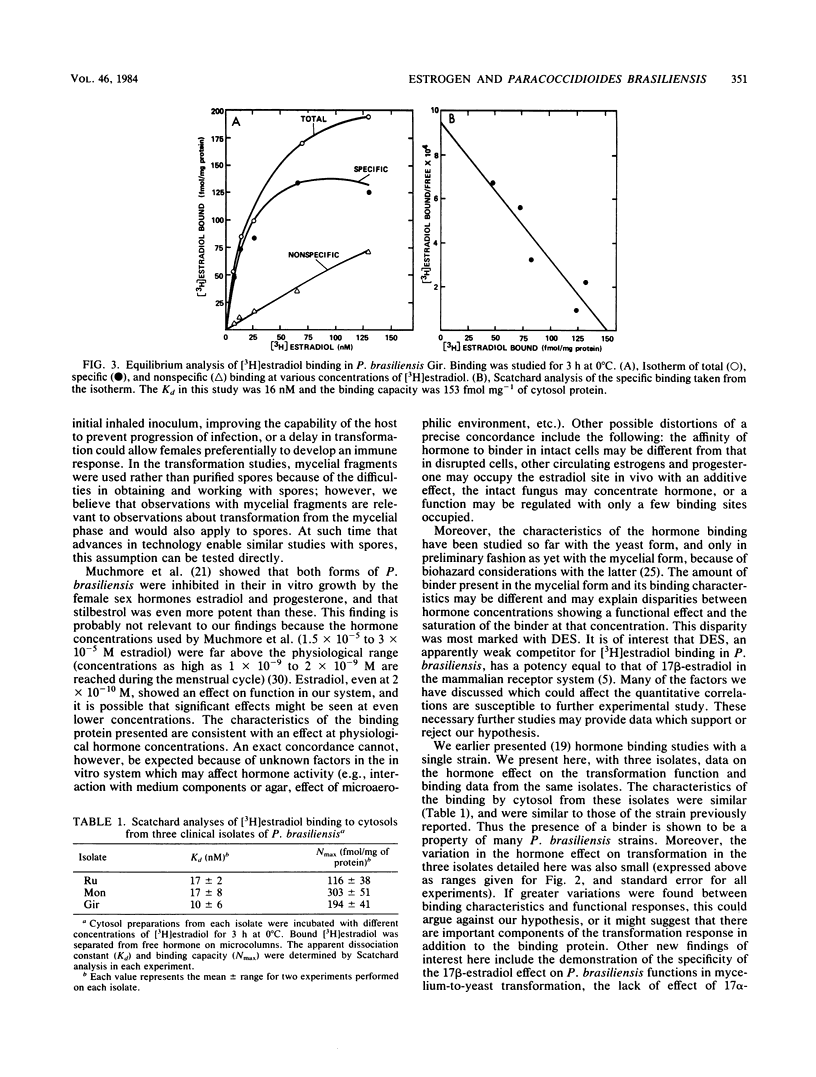
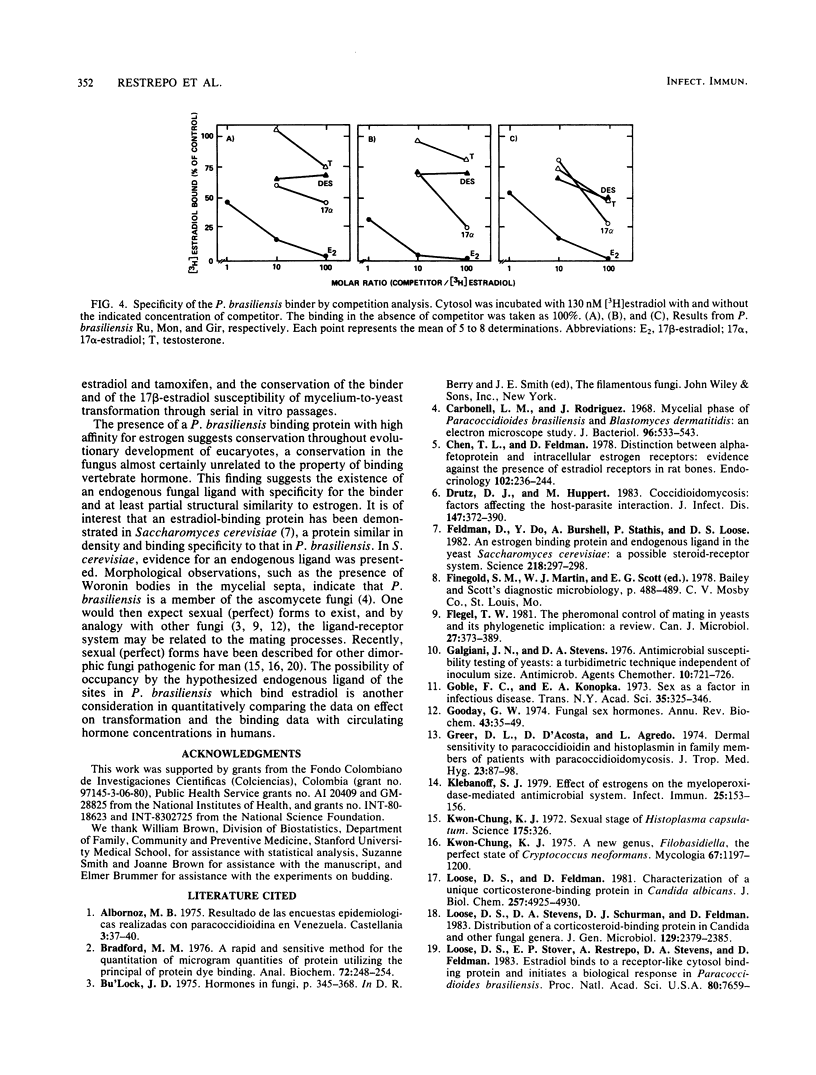
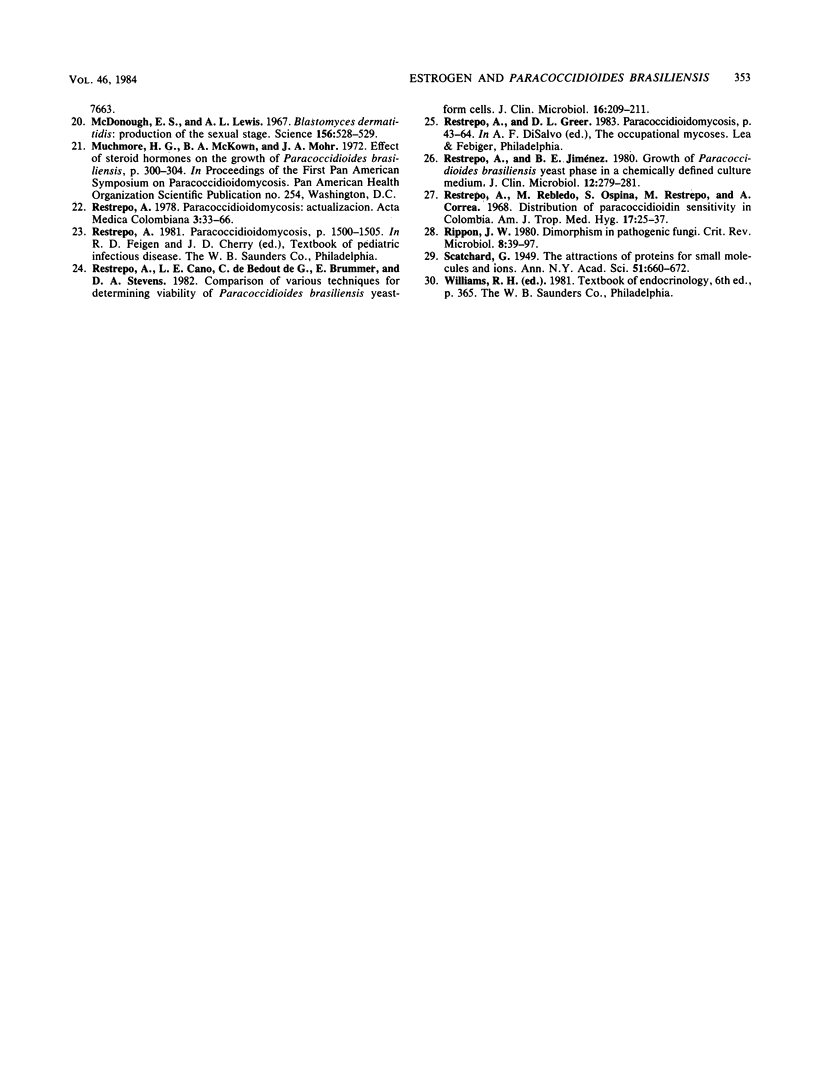
Images in this article
Selected References
These references are in PubMed. This may not be the complete list of references from this article.
- Bradford M. M. A rapid and sensitive method for the quantitation of microgram quantities of protein utilizing the principle of protein-dye binding. Anal Biochem. 1976 May 7;72:248–254. doi: 10.1016/0003-2697(76)90527-3. [DOI] [PubMed] [Google Scholar]
- Carbonell L. M., Rodriguez J. Mycelial phase of Paracoccidioides brasiliensis and Blastomyces dermatitidis: an electron microscope study. J Bacteriol. 1968 Aug;96(2):533–543. doi: 10.1128/jb.96.2.533-543.1968. [DOI] [PMC free article] [PubMed] [Google Scholar]
- Chen T. L., Feldman D. Distinction between alpha-fetoprotein and intracellular estrogen receptors: evidence against the presence of estradiol receptors in rat bone. Endocrinology. 1978 Jan;102(1):236–244. doi: 10.1210/endo-102-1-236. [DOI] [PubMed] [Google Scholar]
- Drutz D. J., Huppert M. Coccidioidomycosis: factors affecting the host-parasite interaction. J Infect Dis. 1983 Mar;147(3):372–390. doi: 10.1093/infdis/147.3.372. [DOI] [PubMed] [Google Scholar]
- Feldman D., Do Y., Burshell A., Stathis P., Loose D. S. An estrogen-binding protein and endogenous ligand in Saccharomyces cerevisiae: possible hormone receptor system. Science. 1982 Oct 15;218(4569):297–298. doi: 10.1126/science.6289434. [DOI] [PubMed] [Google Scholar]
- Flegel T. W. The pheromonal control of mating in yeast and its phylogenetic implication: a review. Can J Microbiol. 1981 Apr;27(4):373–389. doi: 10.1139/m81-059. [DOI] [PubMed] [Google Scholar]
- Galgiani J. N., Stevens D. A. Antimicrobial susceptibility testing of yeasts: a turbidimetric technique independent of inoculum size. Antimicrob Agents Chemother. 1976 Oct;10(4):721–728. doi: 10.1128/aac.10.4.721. [DOI] [PMC free article] [PubMed] [Google Scholar]
- Gooday G. W. Fungal sex hormones. Annu Rev Biochem. 1974;43(0):35–87. doi: 10.1146/annurev.bi.43.070174.000343. [DOI] [PubMed] [Google Scholar]
- Greer D. L., D'Costa de Estrada D., Agredo de Trejos L. Dermal sensitivity to paracoccidiodin and histoplasmin in family members of patients with paracoccidioidomycosis. Am J Trop Med Hyg. 1974 Jan;23(1):87–98. doi: 10.4269/ajtmh.1974.23.87. [DOI] [PubMed] [Google Scholar]
- Klebanoff S. J. Effect of estrogens on the myeloperoxidase-mediated antimicrobial system. Infect Immun. 1979 Jul;25(1):153–156. doi: 10.1128/iai.25.1.153-156.1979. [DOI] [PMC free article] [PubMed] [Google Scholar]
- Kwon-Chung K. J. A new genus, filobasidiella, the perfect state of Cryptococcus neoformans. Mycologia. 1975 Nov-Dec;67(6):1197–1200. [PubMed] [Google Scholar]
- Kwon-Chung K. J. Sexual stage of Histoplasma capsulatum. Science. 1972 Jan 21;175(4019):326–326. doi: 10.1126/science.175.4019.326. [DOI] [PubMed] [Google Scholar]
- Loose D. S., Feldman D. Characterization of a unique corticosterone-binding protein in Candida albicans. J Biol Chem. 1982 May 10;257(9):4925–4930. [PubMed] [Google Scholar]
- Loose D. S., Stevens D. A., Schurman D. J., Feldman D. Distribution of a corticosteroid-binding protein in Candida and other fungal genera. J Gen Microbiol. 1983 Aug;129(8):2379–2385. doi: 10.1099/00221287-129-8-2379. [DOI] [PubMed] [Google Scholar]
- Loose D. S., Stover E. P., Restrepo A., Stevens D. A., Feldman D. Estradiol binds to a receptor-like cytosol binding protein and initiates a biological response in Paracoccidioides brasiliensis. Proc Natl Acad Sci U S A. 1983 Dec;80(24):7659–7663. doi: 10.1073/pnas.80.24.7659. [DOI] [PMC free article] [PubMed] [Google Scholar]
- McDonough E. S., Lewis A. L. Blastomyces dermatitidis: production of the sexual stage. Science. 1967 Apr 28;156(3774):528–529. doi: 10.1126/science.156.3774.528. [DOI] [PubMed] [Google Scholar]
- Restrepo A., Cano L. E., de Bedout C., Brummer E., Stevens D. A. Comparison of various techniques for determining viability of Paracoccidioides brasiliensis yeast-form cells. J Clin Microbiol. 1982 Jul;16(1):209–211. doi: 10.1128/jcm.16.1.209-211.1982. [DOI] [PMC free article] [PubMed] [Google Scholar]
- Restrepo A., Jiménez B. E. Growth of Paracoccidioides brasiliensis yeast phase in a chemically defined culture medium. J Clin Microbiol. 1980 Aug;12(2):279–281. doi: 10.1128/jcm.12.2.279-281.1980. [DOI] [PMC free article] [PubMed] [Google Scholar]
- Restrepo A., Robledo M., Ospina S., Restrepo M., Correa A. Distribution of paracoccidioidin sensitivity in Colombia. Am J Trop Med Hyg. 1968 Jan;17(1):25–37. [PubMed] [Google Scholar]
- Rippon J. W. Dimorphism in pathogenic fungi. Crit Rev Microbiol. 1980;8(1):49–97. doi: 10.3109/10408418009085078. [DOI] [PubMed] [Google Scholar]



